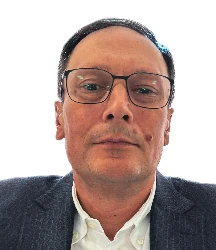3147 - Realistic Closed-Form TCP Model including Cell Sensitivity Dependence
Presenter(s)

K. V. Diaz Hernandez1, S. Unterkirhers2, J. Besserer3, and U. Schneider1,2; 1Science Faculty, University of Zürich, Zürich, Switzerland, 2Institute for Radiotherapy, Klinik Hirslanden, Zurich, Switzerland, 3Hirslanden radiotherapy, Zürich, Switzerland
Purpose/Objective(s): To develop a closed form Poissonian linear-quadratic (LQ) tumor control probability (TCP) model by accounting for two key sources of tumor heterogeneity: tumor size variability and differences in cell sensitivity across patients.
Materials/Methods: A novel mechanistically-based population TCP model was developed, incorporating an exponential tumor size distribution and uniformly distributed variations in cell sensitivity across the population. Additionally, an exponential dependence of local control (LC) based on time to failure was introduced. The proposed model was fitted to treatment outcome data from 22 studies on early-stage non-small cell lung cancer (NSCLC), covering various dose regimens, tumor volumes, and treatment durations. For comparison, an alternative evaluation was performed using Gaussian and log-normal distributions of radiosensitivity. The fitting process utilized a log-likelihood algorithm, with the Wald test assessing parameter significance and the Akaike Information Criterion (AIC) used for model comparison.
Results: The formulated realistic TCP model, incorporating tumor volume and uniformly distributed cell radiosensitivities, produced the following parameter estimates: cell sensitivity (a) = 0.37 [0.13–0.47] Gy-1, bandwidth ?a = 0.37 [0.04–0.42] Gy-1, ß = 0.015 [0.009–0.039] Gy-2, characteristic time for LC to reach a constant value tchar= 19.6 [7.3–90.8] months, and cell population doubling time Td = 2.0 [0.2–4.9] days. The parameters a, ?a, and ß were statistically significant (p < 0.05), whereas Td and tchar were not. Based on data from 1675 lesions, this model demonstrated a better fit compared to competing approaches using Gaussian or log-normal distributions for radiosensitivity. Additionally, incorporating a uniform distribution of a into TCP derivation enables a closed-form solution, which is not achievable with the alternative distributions that require numerical solutions.
Conclusion: This study introduces a closed-form population TCP model that effectively incorporates tumor volume variations and both inter- and intra-heterogeneities in radiosensitivity, with a uniform radiosensitivity distribution yielding the best fit to NSCLC data compared TCP derivations using Gaussian and log-normal distributions. By modelling local control as an exponential function of follow-up time, this approach allows for the analysis of treatment outcomes at different points of failure. Alternative cell survival models can be incorporated into the new TCP derivation. To our knowledge, for the first time a Poisson model for individual patient is related to a model of a cohort of patients which allows a consistent application of population parameters to individual patients.
